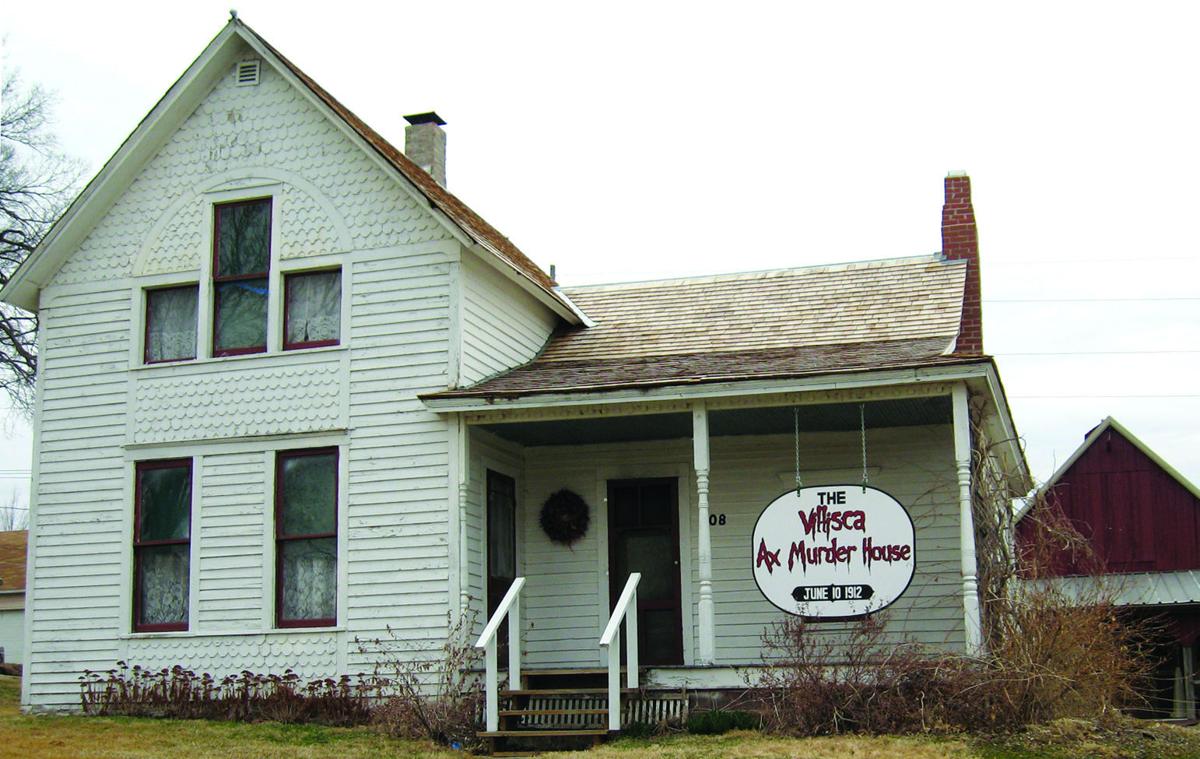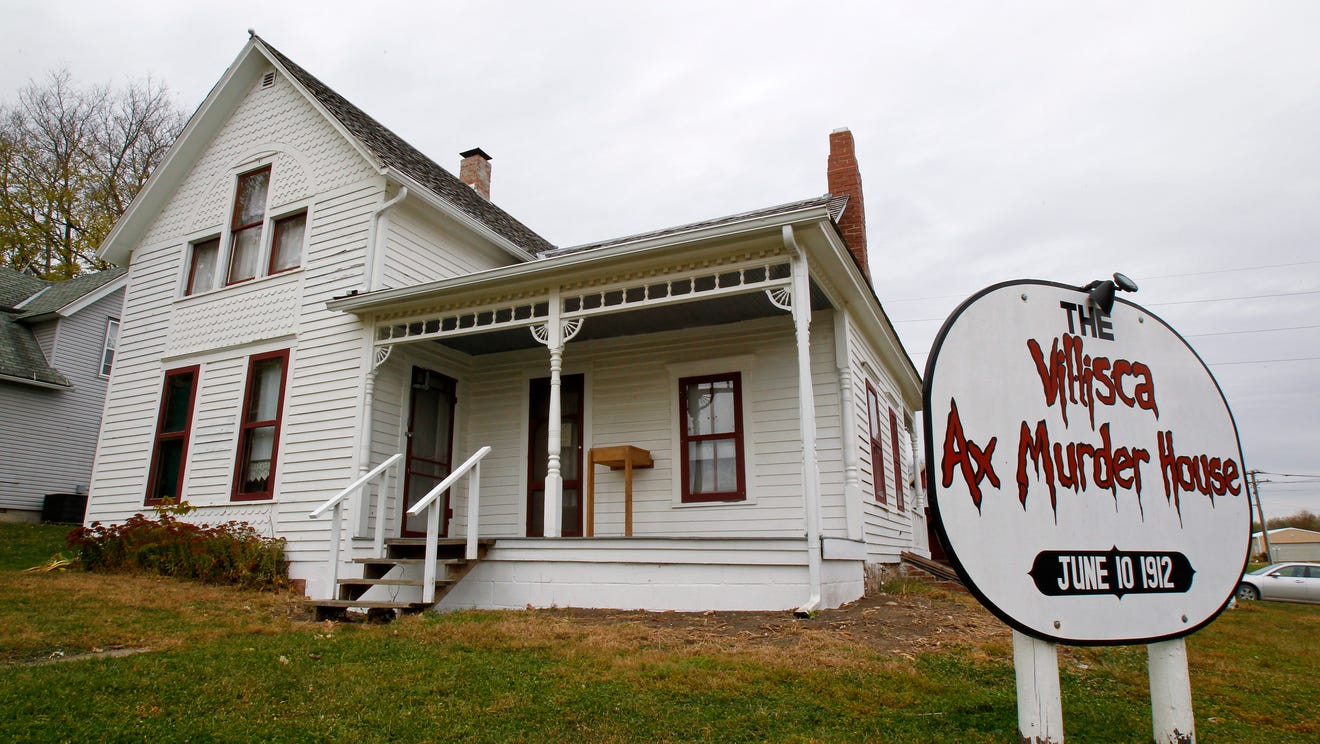Could a quiet night in a small Iowa town turn into a scene of unimaginable horror? The Villisca Axe Murders, a cold case that continues to haunt the annals of American crime, stand as a stark reminder of the darkness that can lurk beneath the surface of the most idyllic settings.
The year was 1912. The place, Villisca, a town nestled in the rolling hills and farmland of southwest Iowa, a community of approximately 1,100 residents. The victims: the Moore family Josiah, Sarah, and their four children, Herman, Mary Katherine, Arthur Boyd, and Paul Vernon along with two young guests, Ina Mae and Lena Gertrude Stillinger. Found bludgeoned to death with an axe in their home on the morning of June 10th, the eight victims were discovered in their beds, victims of a crime that would remain unsolved for over a century.
| Victim | Age | Relationship |
|---|---|---|
| Josiah Moore | 43 | Father, Business Owner |
| Sarah Moore | 39 | Mother |
| Herman Moore | 11 | Son |
| Mary Katherine Moore | 9 | Daughter |
| Arthur Boyd Moore | 7 | Son |
| Paul Vernon Moore | 5 | Son |
| Ina Mae Stillinger | 8 | Guest |
| Lena Gertrude Stillinger | 5 | Guest |
For further information on the victims and the case details, you can find reliable sources such as the Villisca Axe Murder website, which is dedicated to the case investigation: Villisca Axe Murder Website.
The gruesome details of the crime were chilling. The victims were all found in their beds, bludgeoned to death with a blunt axe. The rooms were dark, the doors and windows were secured, and the scene offered no immediate clues to the perpetrator's identity. The investigation that followed would span years, involve numerous suspects, two trials, and a nationwide manhunt, yet the mystery of who committed the Villisca axe murders persists.
The home itself, built in 1868 as a farmhouse, stands as a grim monument to the tragedy. Today, it serves as a tourist destination, drawing true crime enthusiasts and the curious from around the world. Its a stark reminder of the event that took place on June 9th, 1912, when the horror was unleashed, resulting in the violent deaths of eight people.
The investigation into the Villisca axe murders was a complex undertaking that spanned years. Authorities chased multiple leads over the years, each promising a breakthrough, yet ultimately falling short. Reverend George Lyn Jacklin Kelly, who left Villisca on a train the morning after the murders, became a person of interest. Another name that surfaced was William Mansfield, and Iowa State Senator Frank Fernando Jones was also tied to the case, with the testimony of Alice Willard being central to his possible involvement. Despite these leads, and many others, no one was ever definitively charged with the crime.
As early as May 1913, investigators speculated the Moore family's murder might be part of a string perpetrated by a serial killer. Federal officer J.N. "John" McClaughry, assigned to the Villisca case, announced that he had found a suspect in those murders and four other crimes committed throughout the Midwest around the same time. This theory, like so many others, ultimately failed to provide a definitive answer to the enduring question of who committed the murders.
The case's complexity was further amplified by slander lawsuits and the impact it had on political careers. The Villisca axe murders are considered one of the most prolific and heinous crimes to take place in U.S. history, it made and broke political careers.
The town of Villisca, located in Montgomery County, Iowa, is nestled between two rivers. It began as a settlement known as The Forks, and by 1858 the area had just two houses, and today it's home to about 1,100 residents. The murders sent shockwaves through this close-knit community, forever altering the perception of safety and security.
The Villisca Axe Murder case is a subject of fascination and study. Numerous bloggers and authors have delved into the details, offering insights into the events of that fateful night and the subsequent investigation. The 1912 Villisca Axe Murders blog, for instance, provides a detailed look at the case, as does the coverage found at other outlets. Kelly Mullen, in her writing, explores the impact of the murders on Villisca.
The lasting impact of the Villisca Axe Murders cannot be overstated. It has been the subject of documentaries, books, and countless articles. The murders ruined an Iowa State Senator's career, Frank F. Jones. The enduring mystery has fueled the public's fascination with true crime for over a century.
The eight caskets were kept at the local firehouse during the victims' June 12 funeral in the Villisca town square, a stark reminder of the tragedy that had befallen the town. The Villisca Axe Murder House didn't start as a haven for horror. Built in 1868, the home originated as a modern farmhouse for local resident George Loomis.
The question that continues to haunt the Villisca Axe Murder case remains: Who was responsible? Despite the passage of time, the question persists, and the brutal details of the crime continue to captivate and horrify those who encounter the story of the Villisca axe murders, a gruesome, unsolved mystery that stands as a chilling testament to the darkest corners of the human heart.


